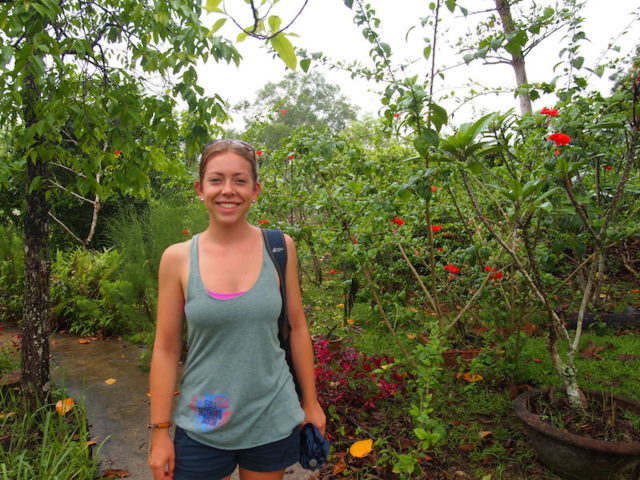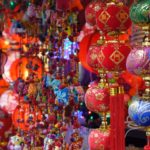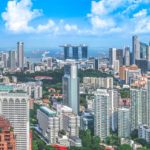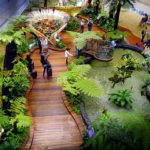Singapore Travel: Finding Natural Beauty Beyond the Malls
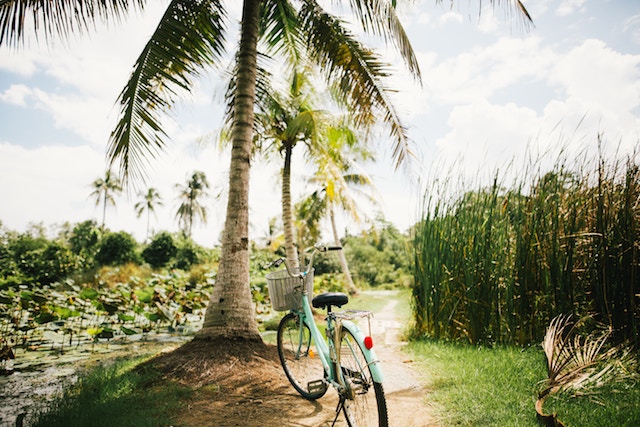
A typical 3-day tour of Singapore consists of exploring the famous Botanic Gardens, Marina Bay Sands Hotel with its billion dollar views, theme parks, and culture in the many temples, mosques, and colonial architecture. But when I lived in Singapore on a bilateral exchange through my home university in Canada, I didn’t want just a typical experience.
I received many incredulous statements from friends when I told them I would be moving to Singapore for four months. “You’re in Environmental Science and love being outdoors,” they told me. “Why would you move to a big city?” I responded by saying that yes, there wouldn’t be big national parks as there are in Canada, but maybe I would learn something new by living in a population-dense, high-tech country. Plus, Singapore is renowned for being ‘The Garden City’ despite its busy skyline.
Once the list of tourist activities ran out, I wondered what Singaporeans my age did for fun. The answer I discovered was eating and shopping.
It was certainly thrilling to be atop 1-Altitude (the highest al fresco bar in the world), eating the famous chili crab, and window shopping for out-of-reach designer clothes on Orchard Road during my first few weeks. But once the list of tourist activities ran out, I wondered what Singaporeans my age did for fun.
The answer I discovered was eating and shopping. This didn’t surprise me, as advertisements for food and retail permeate public space. With an environmental background, I often found this overwhelming, and I became desperate to find regions in the city that escaped consumerism.
I searched Google Maps for any resemblance of green, and on my days off I hopped on buses to explore. Surprisingly, many of my local classmates had not been to Singapore’s small parks and nature reserves and were not able to give me guidance. However, taking a course on the biophysical environment of Singapore helped me identify natural spaces, many of them with remnants of native ecosystems.
But once the list of tourist activities ran out, I wondered what Singaporeans my age did for fun. The answer I discovered was eating and shopping.
Getting there was often an interesting journey in itself. Taking transit is a highly mechanized experience in Singapore, and if you step out of line, expect to be shamed. Even eating and drinking on transit can warrant a fine. And despite the high density of commuters, it is not a social experience: eerie silence fills the compartment as head after head bends down to stare at smartphones.
Upon exiting (or as an automated, vaguely British accent says, “alighting”) the railway, the crowd forms a single file as the people make their way toward their destination, through heavily air-conditioned shopping malls.
Luckily, once I reached my own destination, I experienced a welcome relief to Singapore’s bustling downtown and public transit.
Bukit Batok Nature Park and Bukit Timah Nature Reserve
These central hills are host to walking trails and a biodiverse secondary rainforest. Colorful, long-tailed birds flit through the trees among fat, spiky fruit, alongside elderly people practicing Tai Chi. Bukit Batok is a smaller park with stunning views of an abandoned quarry. Bukit Timah, home to almost half of Singapore’s flora and fauna, can be explored through extensive trails.
Sungei Buloh Wetland Reserve
In the northwest, Sungei Buloh Wetland Reserve boasts large monitor lizards, crabs, migratory birds, and even saltwater crocodiles. Free guided tours and demonstrations of fish farming are available, but wildlife can also be seen by just strolling on the boardwalk.
MacRitchie Reservoir Park
Monkeys can be found in abundance at MacRitchie Nature Trail, snatching food from unsuspecting visitors. The most exciting feature of the park is a 25m-high TreeTop walk overlooking the mature forest canopy.
East Coast Park
East Coast Park attracts rollerbladers, windsurfers, cyclists, and beachfront diners. Don’t be fooled by its pristine appearance–the beaches are all man-made, and the water is rumored to be contaminated from the shipping industry. But is one of the most green areas in the city and popular among recreation lovers.
Labrador Nature Reserve
In the south, Labrador Nature Reserve is a small area that still has native seagrass, mangrove habitat and the only rocky sea-cliff on the island. It even has World War II relics. It is an extension of the Southern Ridges, which also has interesting pathways, but Labrador in and of itself is almost too small to be remarkable. However, views of the ocean and Sentosa Island may have been what attracted the wedding party I spotted during my visit.
Kranji Farm
One of my most memorable trips was to Bollywood Veggies in the Kranji Farm area. It is incredible that productive farmland can be run in a city filled mostly with skyscrapers, high rises and industry – promoting sustainability and social justice!
These places exposed me to a side of Singaporean culture that was subtler. Travelers are not encouraged to travel to Singapore’s natural areas, perhaps because they do not raise tourist revenue. More likely, I think, is that traveling to the parks exposes a grittier side of Singapore. Good English can be scarce in family-run convenience stores that are common in the outskirts. I once saw derelict shelters and a person sleeping under a bridge on an abandoned train track – indications of poverty that Singapore so effectively hides.
Travelers are not encouraged to travel to Singapore’s natural areas, perhaps because they do not raise tourist revenue. More likely, I think, is that traveling to the parks exposes a grittier side of Singapore.
I was sometimes looked at strangely in neighbourhoods where ang mo (white people) are rarely seen, but I never felt unsafe. Rather, I was welcomed by friendly taxi drivers and even the occasional resident asking if I needed help with directions. I was charmed by many of Singapore’s cultural characteristics, such as aunties (older women) serving kopi (coffee) in hawker centres (outdoor community food courts).
I left Singapore with richer experiences than if I had simply stuck to Lonely Planet. Singapore is rightly proud of its multicultural heritage and successful commerce that is more often celebrated by travelers, but I think its modest inner neighbourhoods and nature areas should receive credit, too.
Singapore Travel: Finding Natural Beauty Beyond the Malls
Have you traveled to Singapore? How was your trip? Email us at editor@pinkpangea.com for information about sharing your experience and advice with the Pink Pangea community. We can’t wait to hear from you.
Singapore Travel: Finding Natural Beauty Beyond the Mall photo credits: Andrea Johancsik and unsplash.

